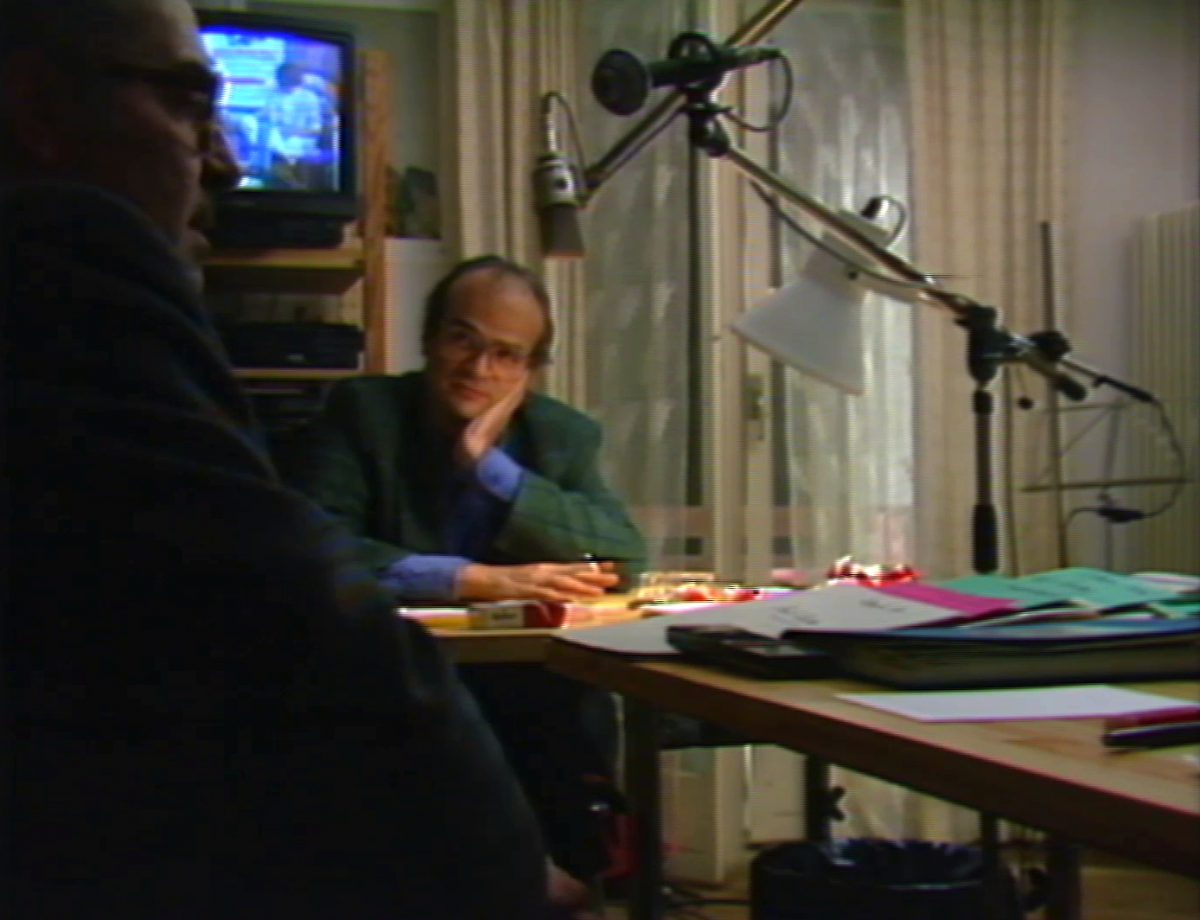Thinking as Giving Rhythm

Serge Daney is the force of a surprising opening gambit. In the form of a question, or the negation of obviousness, as a rhyme of ideas or right away with a brutal argumentation that stalemates you, “if... then”. The strategy of the brusque but also panicky outburst. The ground is not prepared, the argument not introduced. He parachutes the reader straight into the war zone. Bullets whizz around his ears, mines surround him. But the author says: I will lead you through it!
Reasoning will follow later. However narrow the road of the astonishing “attacco”, he still leads you to ever wider views. He takes you spiralling along a mountain wall, higher and higher, with ever new and surprising connections. With this, too, he overwhelms you. You gasp for breath, you threaten to slide down, you lose your footing, but the writer uses your captivation to carve a way through your lazy obviousness.
Equally surprising is his coda: no conclusion but an open space into which you need to jump. He announces sequels, further developments, roads to travel. But you have understood by now that the writer is not a writer of closure, of panoramically looking back on the road travelled, of the finished labour of reasoning. He is not working on reasonings anyway; it is a never-ending moving up. Things do not follow logically but prismatically slide around each other.
He nevertheless manages to give this construction without an “introduction” or “conclusion” the character of a diamond. Not only with the ideas that have been conquered and created, but especially with the example that he gives of connections, with the style that he indicates of associations, with the coherence that he forces us to imagine between phenomena that we mindlessly (which is how it often seemed to me after having read a bit of Daney) accept. Do not, above all, accept anything, but resist and investigate it!
Daney is an intellectual programme. A programme in the line of Bazin, Rivette, Bonitzer, that is to say, a philosophical argument with (and not only about) film. Not regarding film as an object of study, but as a philosophical subject. The film is not subjected to probing reflection from the outside, but the reflection occurs along with the matter, with the substance of the image, the montage, with the resistance of what is seen. For those who love both film and philosophy, the intimate entanglement of these two realms is particularly stimulating, adventurous and dramatic.
Time and again, I see professional philosophy and “essayism” nonchalantly pass this over. They do not perceive the arrangement’s originality, nor the impulses that emanate from radically new images and signifying machines. Were it not for these few authors, the world in which film and television have become all-determining would appear to me as absolute delusion and anarchy. But they are here, and they allow for hand-to-hand combat with these prostheses of modern culture. This century is erroneously concerned with all kinds of avant-garde problems. To some, it has long been clear that our world is defined elsewhere.
Daney is a series of baffling defeats. He liquidates cinephilia; he has chronicled the demise of film in acrid distress calls. He has seen his intellectual programme get kicked out of the Cahiers premises like a broken-down yapper. And he has eventually seen himself sit down, dogged and bewildered, in front of the much maligned instrument of social control: television. While around him academic film studies all too efficiently accompanied cinema’s dying process, he stubbornly refused to consider film as an object. He studied with it, he lived with it. Cinema remained the libidinous centre of thought and life.
Somewhere, he diagnoses that the love of film often has to do with the absence of the father: the cinephile as a father orphan. The cinema as the dreamed home – a more perverse dream detour seems unimaginable. A place where passions can be peeped at onscreen, while in the auditorium everyone assumes a bachelor’s autonomy. Both displacement and exaltation of a lifelong loss, of a life-structuring lack. There appears to be a structural relationship between the lack in the filmic organization and the libidinous lack of the father orphan. An Oedipal wound that can be repeated exaltingly in the film. The film is the ultimate beneficiary of all the homages generated by the perverse system; but the writer himself rumbles to the impasse of the machine in no time. “To try to hope desperately”, Daney says about television. But his whole oeuvre, his most intimate style, the core of his “modus operandi” as a thinker, writer, polemicist and inspirer, bears the stamp of despair, a despair without slowness and laziness, which excites and drives him at ever greater speed: productive despair, demanding despair. If everything is based on a misunderstanding, the freedom to justify is all the greater and the desire to do so all the more irrepressible. That which one cannot change, one must at least try to think.
This article was originally published as “Denken als ritmeren” in Andere Sinema 110 (juli/augustus 1992).
Beeld (2) uit Entretien entre Serge Daney et Jean-Luc Godard (Jean-Luc Godard, 1988)

